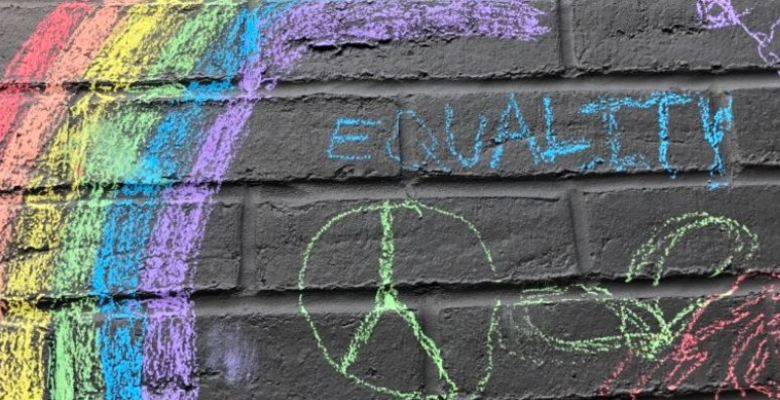
I was three or perhaps four years old when I realized that I had been born into the wrong body, and should really be a girl. I remember the moment well, and it is the earliest memory of my life.
So begins Jan Morris’s extraordinary book, Conundrum. First published in 1974, Conundrum chronicles Jan Morris’s ten year-long, transgender journey that took her from being the journalist James Morris and ended with her becoming the woman we now know as the acclaimed historian and travel writer Jan Morris.
Four decades on and with what now seems remarkable prescience, Conundrum, is partly dedicated to the “thousands of people, perhaps hundreds of thousands” who are also transgender and who “are suffering still in the same solitary and unsought cause”.
In the last few years we have seen a huge rise in the number of children presenting as transgender and schools up and down the country are doing their best to support these children, often in the face of widely conflicting advice and guidance. In the last year alone, 2590 children were referred to the Gender Identity Clinic at the Tavistock and Portman NHS Foundation Trust in London. This is up from just 77 less than a decade ago, a year on year increase of 40 percent.
While many people welcome these referrals as evidence of an increased awareness of gender identity issues, others question the validity of the claims. Can it really be the case that such a large number of children are truly transgender and is it right that children as young as ten are prescribed hormone blocking drugs that delay puberty?
When considering these questions, I am reminded of a previous time when the issues around LGBT+ children were similarly controversial. The 1980s were a particularly hostile time for many LGBT+ young people growing up and for many, the idea of coming out was simply unthinkable. In 1987, in a speech to the Conservative Party Conference seen by many as anti-LGBT+, Margaret Thatcher said…
“Children who need to be taught to respect traditional moral values are being taught that they have an inalienable right to be gay”,
(The next year the Conservative government went on to introduce the notorious Section 28 which banned local authorities and schools from promoting homosexuality or accepting gay couples as a “pretended family relationship”.)
Today, Margaret Thatcher’s speech seems shocking on a number of levels but at the time, many people would have shared this view. The clear inference is that gay children are not necessarily born gay but, rather, they can decide to be gay as if it were some kind of lifestyle choice.
Yes, the speech was made more than thirty years ago and surely no modern, mainstream politician would make similar statements today but imagine we switch just one word in the speech. Imagine we switch the word gay for trans. Now the speech would read “children are being taught that they have an inalienable right to be trans” and it suddenly resonates powerfully with the current debate around transgender children.
Certainly the large number of children presenting as transgender today gives pause for thought but, of course, not all these children will grow up to be trans. But when schools and the media are accused of “sowing confusion” in children or creating a “social contagion” or even making transgender seem “glamorous”, it’s clear that we must take care that we do not revisit the old ignorance and prejudice of the past.
Whatever the case, all children and young people need to feel that they are being fully supported and also, crucially, that they are protected from transphobia and other forms of discrimination. Put simply, the central issue is not so much about transgender per se but about continuing to support young people as they navigate the increasing complexities of adolescence.
Unfortunately, there are worrying signs that, once again, we may be becoming a less tolerant society.
Transgender children like all LGBT+ children are particularly vulnerable to bullying. A recent Stonewall survey (2017) found that nearly half of LGBT+ (45%) children have been bullied at school and, of these, almost half never tell anyone. Studies also suggest that LGBT+ children are at an increased risk of self-harm and suicide. Equally concerning has been a recent rise in homophobic and transphobic hate crimes in England and Wales. Recent research by the Guardian reported that since 2014 offences against gay and lesbian people have doubled while offences against trans people have trebled.
As part of a concerted effort to confront these trends, from September this year, all schools will have to follow new statutory guidelines on the teaching of Relationships and Sex Education. The new guidance builds on existing legislation and in particular, the 2010 Equalities Act which requires all schools to teach the curriculum in a way that does not discriminate against LGBT+ children (as well as other protected characteristics such as race or religion). But the new guidance goes further in making clear that all children should be taught LGBT+ content and that this should be integral to the whole school curriculum (a “whole school approach”) and not just a stand-alone lesson.
At KGS, we are proud to be an inclusive school where all of our students are taught to respect and value themselves and others equally. But more so, we believe that it is not enough to promote mere “tolerance” but rather to move beyond tolerance to a culture of true, welcoming inclusivity and acceptance of diversity.
As we celebrate LGBT+ history month, I cannot think of a more appropriate end to this blog than to, once more, quote the pioneering Jan Morris…
“What matters is the liberty of us all to live as we wish to live; love however we want to love; and to know ourselves, however disconcerting or unclassifiable we may seem, however odd or ugly, at one with the gods and angels”.
.png&command_2=resize&height_2=85)














